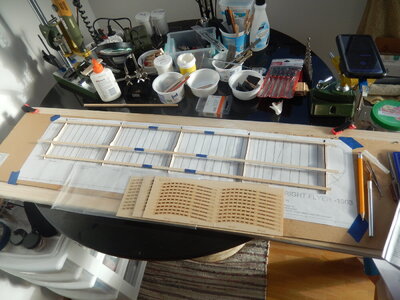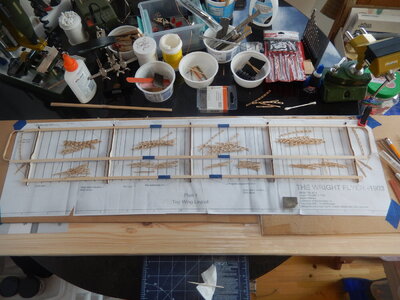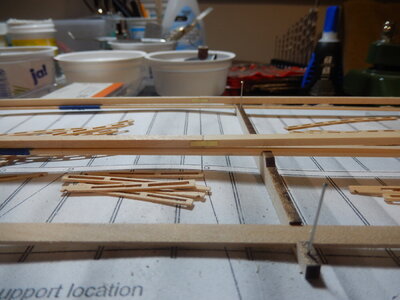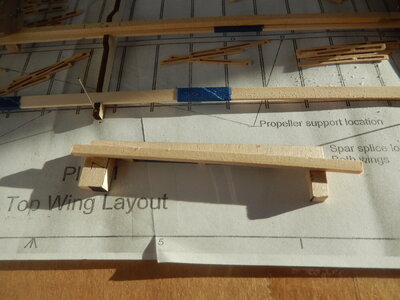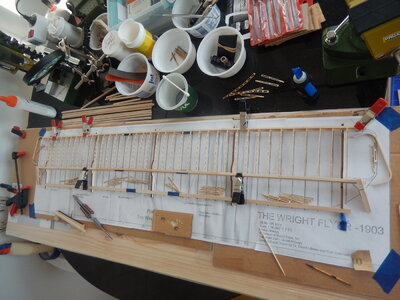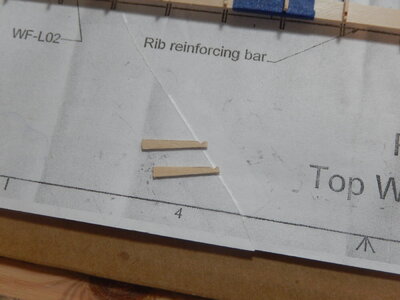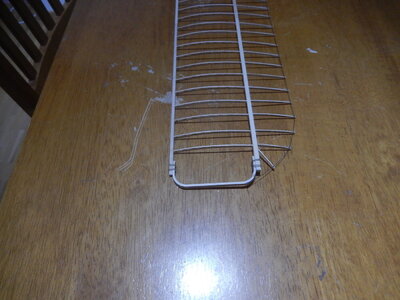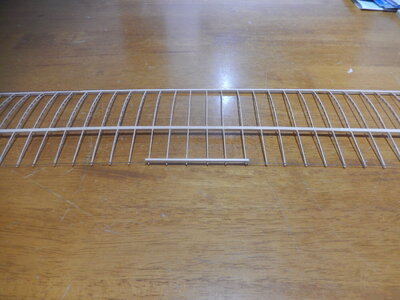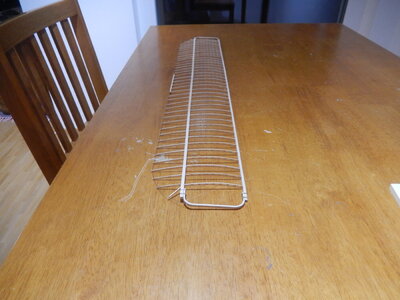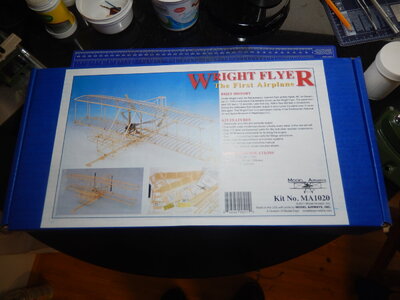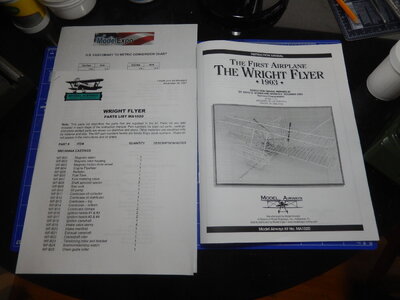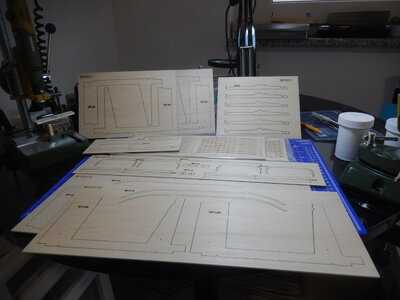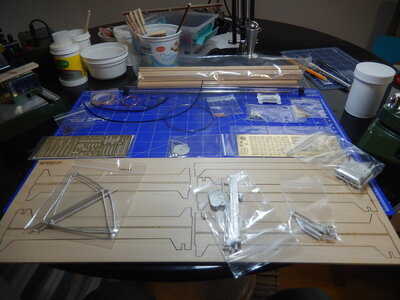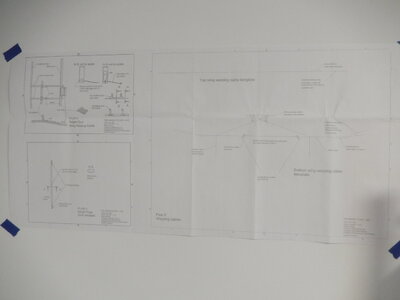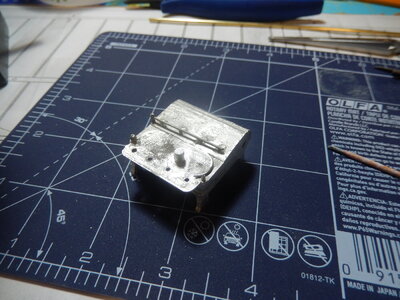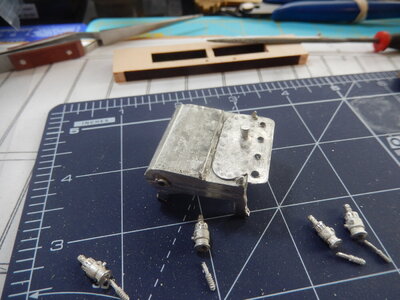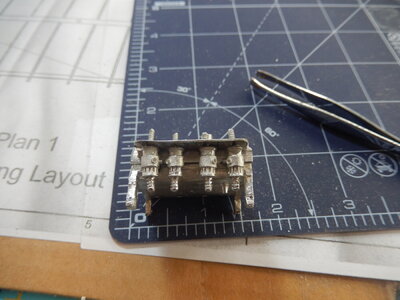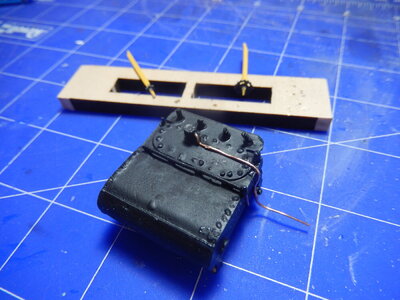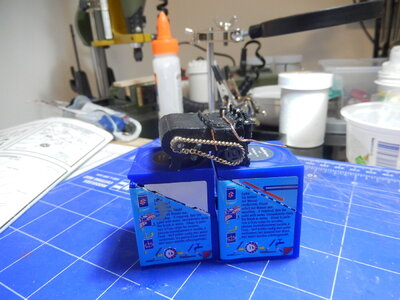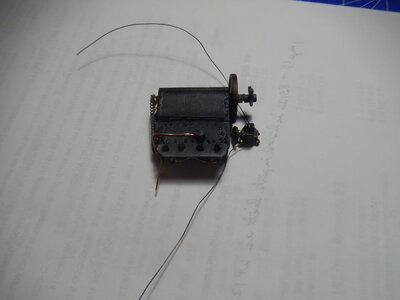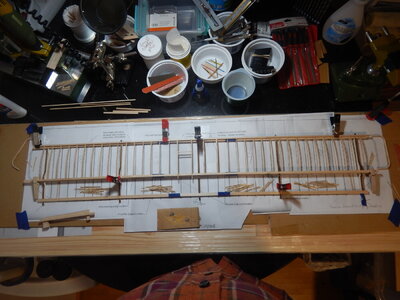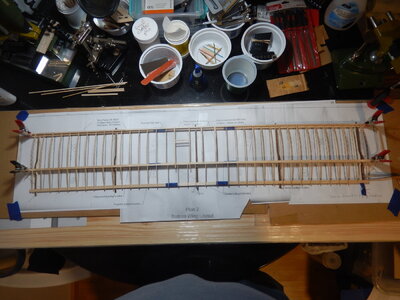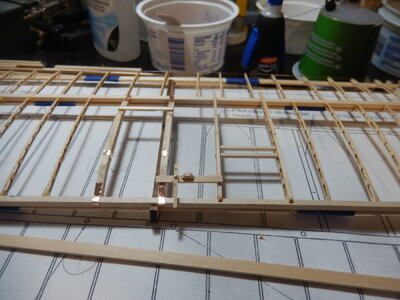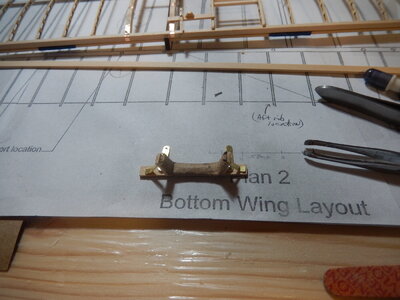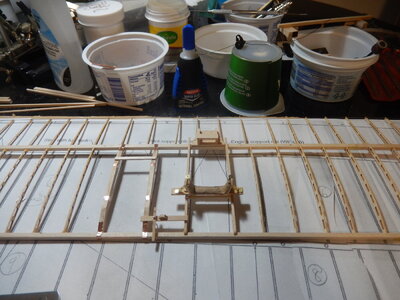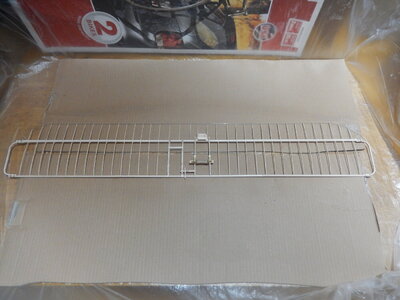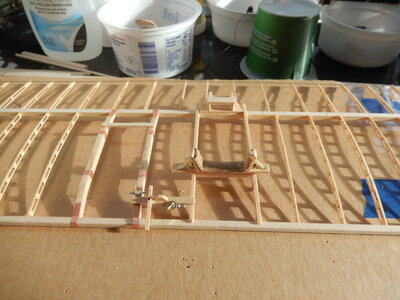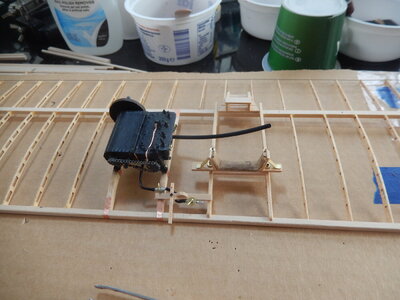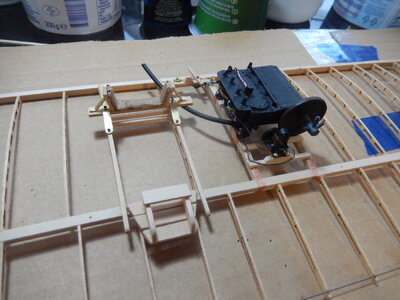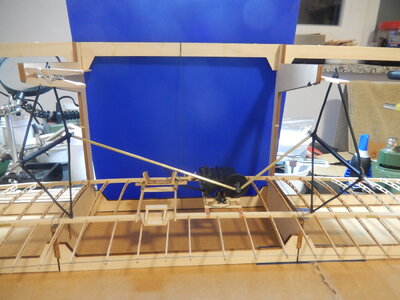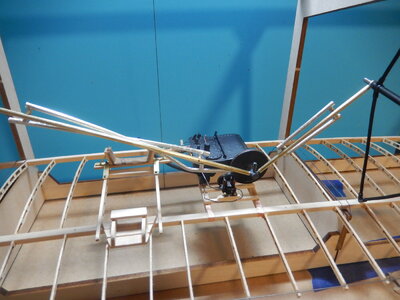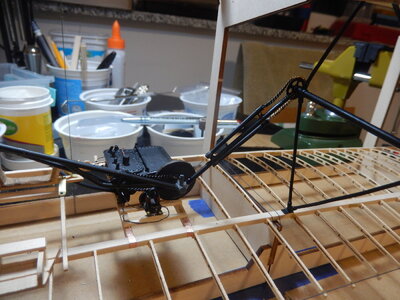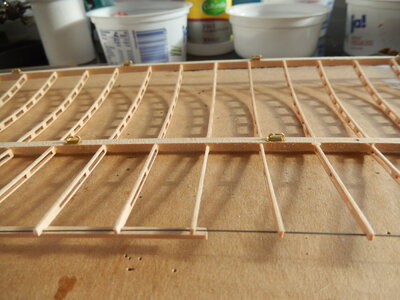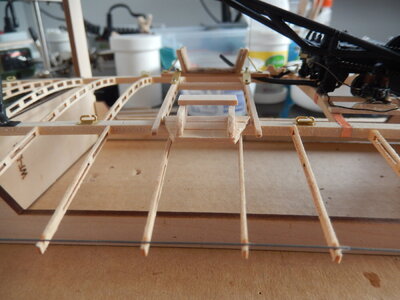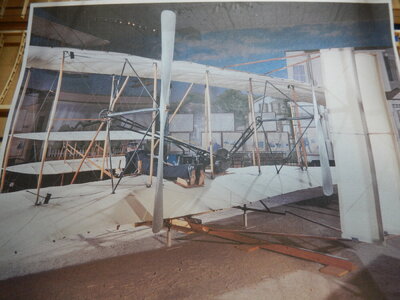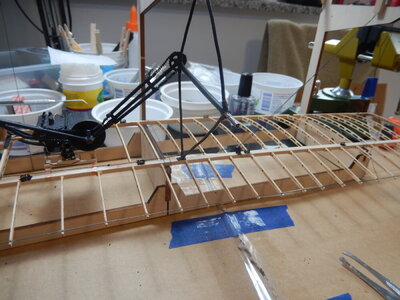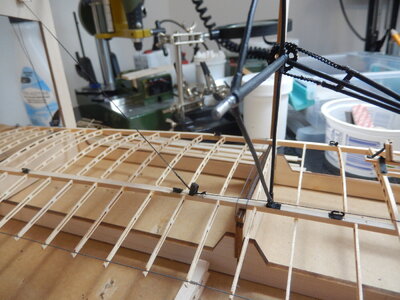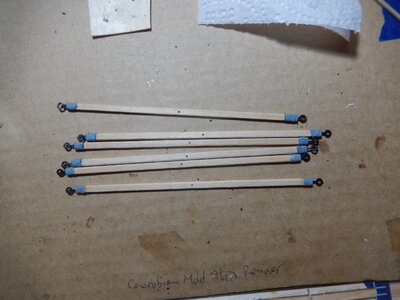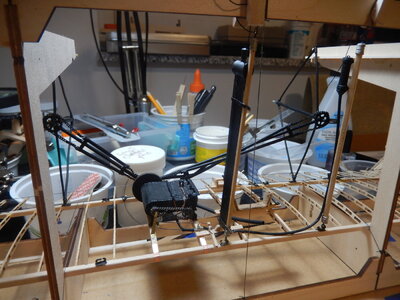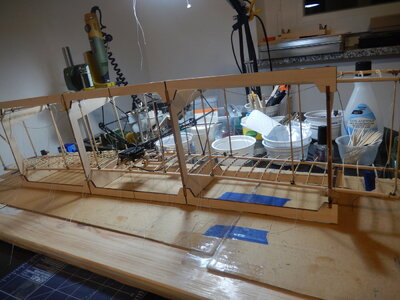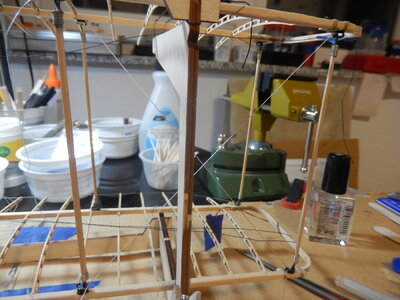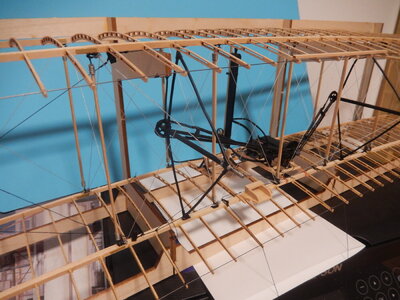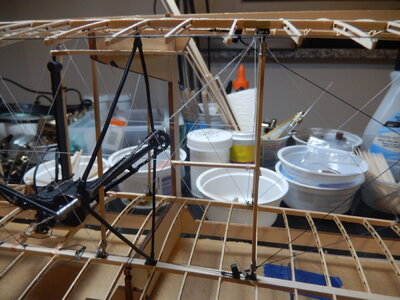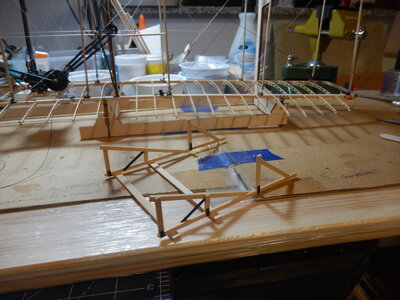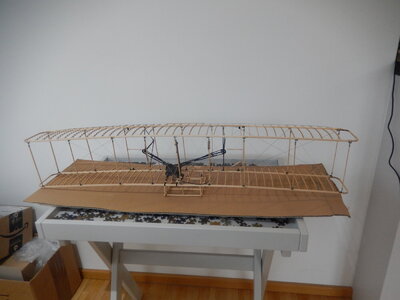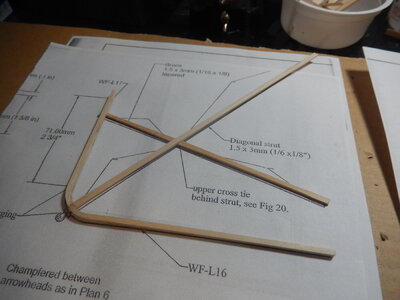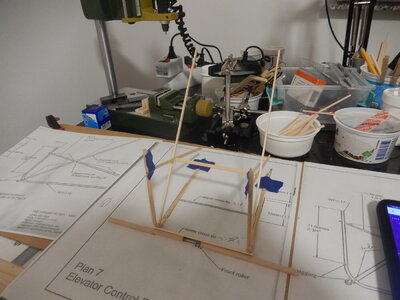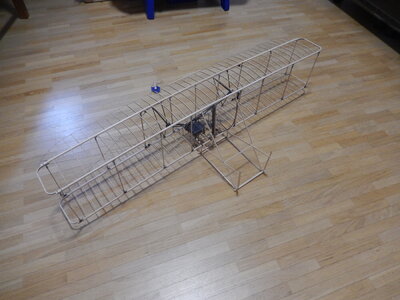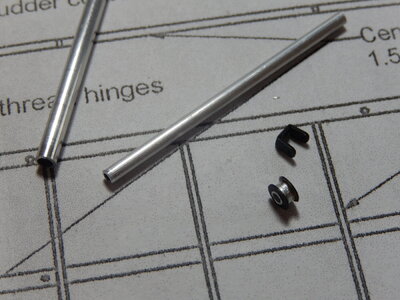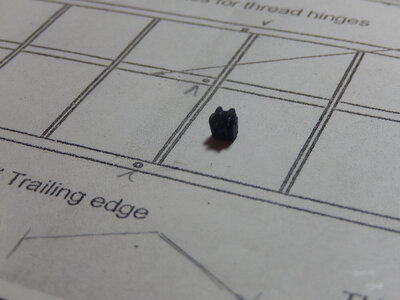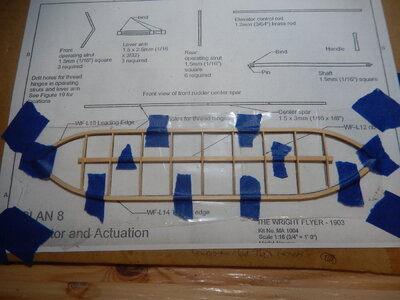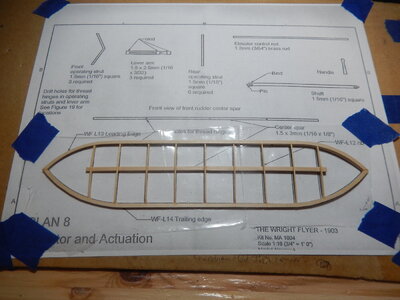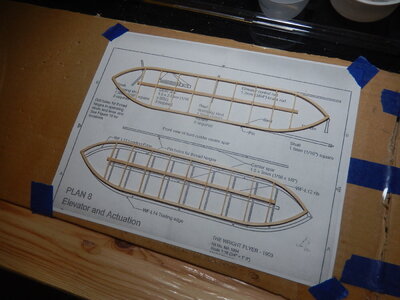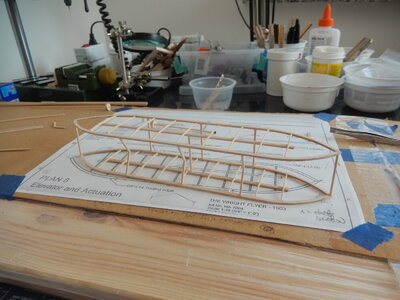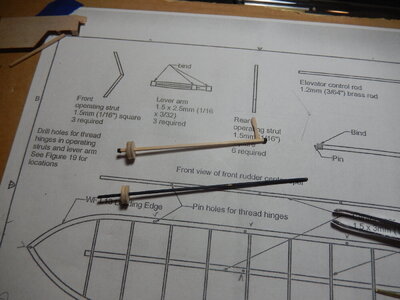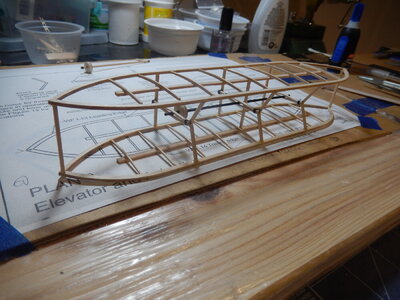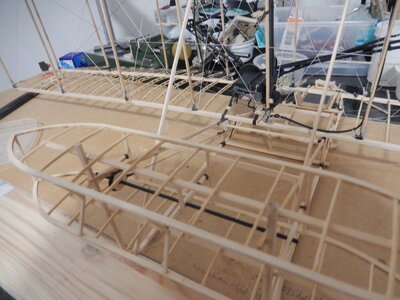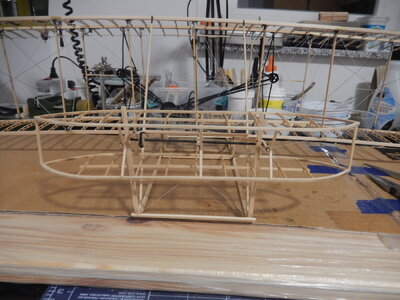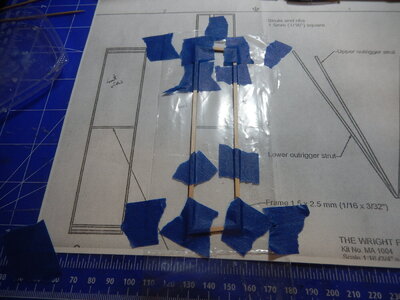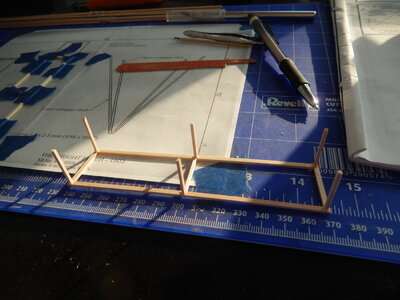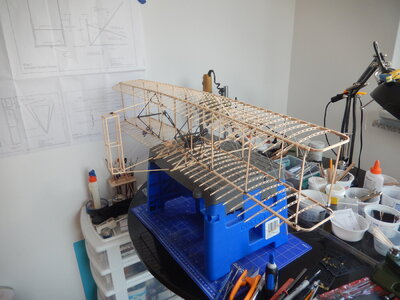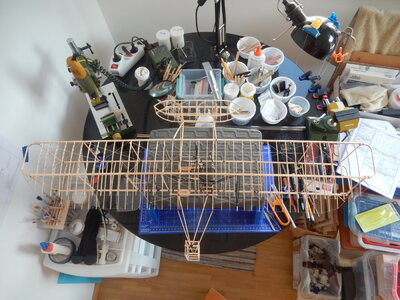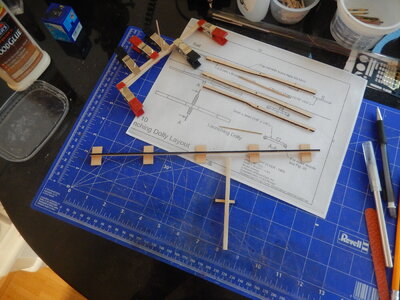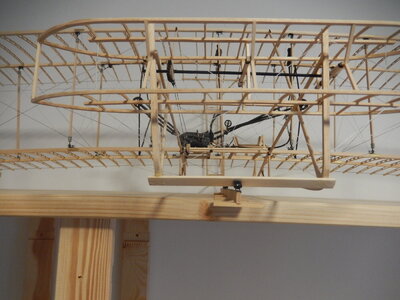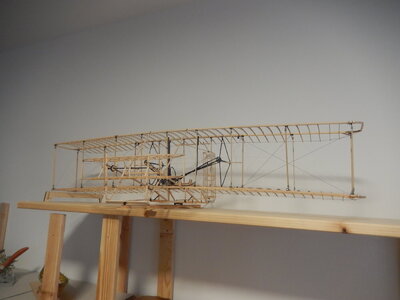20220101
Happy New Year!
Finished the 2 ROKR puzzles this past week so on New Year’s eve it was back to the Wright Flyer. Yesterday and today were about assembling the upper wing.
First, as has been mentioned by others, there are lots of small wooden (and metal) parts and most of the wooden ones are fragile. Go slow, take it easy, take your time, patience is a virtue, etc. I had no problem following all of that advice with the thin rib material; my mistake came with one of the wing tips. While sanding the inside curve on one of the tips I either pressed a bit too hard or torqued the material a bit – 1 large, 1 small & 1 in-between pieces of material. Take a breath, get up and walk around, return to the work table. A little bit of CA later and the wingtip was repaired so it is difficult to see where the break occurred (chose to go the repair route rather than reach out to Model Expo for replacements; would take a bit too long to receive them). To avoid any more issues with sanding the repaired wingtip and the other wingtip I decided to use the sanding drum in my Proxxon drill – and a light touch. No further problems.
Sanding all of the wind ribs for the upper wing and assembling the wing spars was yesterday’s task. Gluing the ribs to the spars, adding the wing tips and adding the trailing edge wire was today’s task. Upper wing is now complete.
To help line up the forward ribs I cut some scrap wood to form a ‘square’. It fits over the forward and main spars, rests on the work surface and has a bearing surface to assist with keeping the ribs square and plumb. The aft ribs were installed by lining them up with the forward ribs by eyeball. (Watch the QC. When I was installing the trailing edge wire, I found two aft ribs that I’d installed upside down. Removed and reinstalled them properly.)
The wing tips are reinforced at the spars by 2 wraps of cord. I used 0.25mm tan rigging thread left over from a ship model. I sealed the knots and darkened the thread with clear nail polish.
One item to be aware of is the outboard diagonal brace struts behind the wing tips at the trailing edge of the wings. The instructions say to cut them from 1mm x 3mm stock and make them 20 mm long. First, don’t go looking for any 1mm x 3mm stock in the kit; there isn’t any. These need to be cut from the scrap that is left after removing the ribs from one of the sheets. Second, check the plans. A 20mm length was too short for the diagonal brace struts that I needed. 22mm worked perfectly.
There is a rib reinforcing bar that goes on the top of the upper wing, at the trailing edge and centered. The instructions state ‘as shown’; the plans are drawn so this reinforcement appears to be on the underside of the upper wing. Don’t spend any time looking for a photo or sketch in the instructions. Take a look at the photo on the box cover and you can see how the reinforcement is installed.
I used yellow Elmer’s glue (carpenter’s glue) to assemble the ribs to the wing spars. I used the same glue when I started to attach the trailing edge wire to the aft rib sections; switched to CA after I’d done about ½ of the right-hand trailing edge wire.
After looking at some other build logs I thought about staining the wings and fuselage structure. I’ve decided not to stain the wood but to seal the wings and fuselage structures with something close to clear; probably a shellac or varnish (all depends what I can find in the local building goods store next week).
I’ll start on the bottom wing tomorrow.
